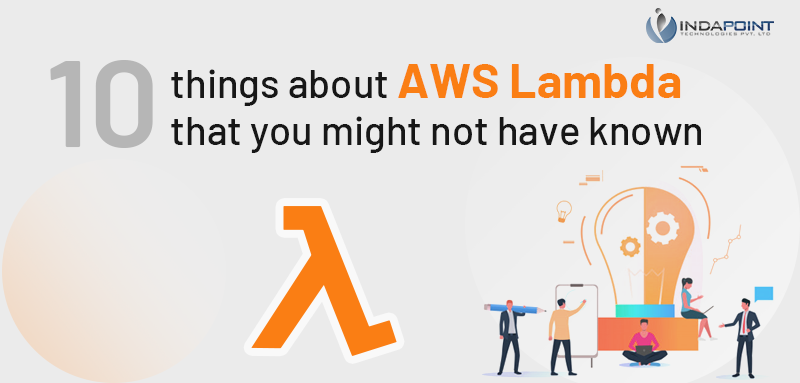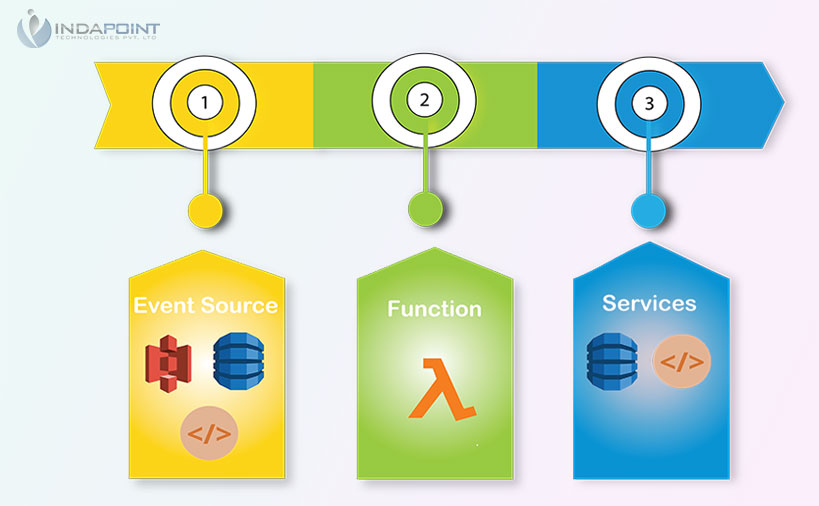Ten things about AWS Lambda that you might not have known
May 11, 2021

For many years, the term “serverless” has become a buzzword, with several apps opting to use this approach. The word comes from the idea that the infrastructure that runs your backend code does not need to be provisioned and handled by you and your team.
This reduces the time and effort needed to get your application ready for development, as well as the time and effort required to maintain your infrastructure. In 2014, Amazon Web Services launched AWS lambda, a product that would become a gem among the many serverless solutions available.
In the unfortunate case that you have not heard this, AWS lambda is the serverless computing response from Amazon. As it seems, the idea behind serverless computer systems is to build a network for a multitude of uses while bypassing the need for costly servers to provide and manage. You are at the top of the Serverless Computing class with AWS lambda Deployment. It is a breeze to set up and handle. All you need is to code the functions you want, customize them the way you want, and then deploy them.
How does AWS lambda Work?

You’re deploying the code in a container when you submit it to lambda. The container, on the other hand, is entirely developed, deployed, and controlled by AWS. You don’t need to be involved in the container’s construction or management, and you don’t have access to any infrastructure resources that would enable you to take care of it. The container is nothing more than a place for your code to live.
The new front runner for the efficient serverless computing crowd is AWS lambda. Following are ten things about AWS lambda, a cloud development service that you might not have known.
Charge for what you use
With simplicity in mind, Amazon has built an AWS web service, and that’s why Amazon can only charge you for the cloud development services you need and not an over-complicated package of crap you don’t like. Invocations and periods of 100 ms cycles are determined from the correct billing. This suggests that the more powerful your coding is, the more money you can save. This rewards savvy company owners who can reassure their engineers of the more efficient programming methods they can take.
On-line editing
For a time, the conventional approach of production and implementation has performed the same way for these services. With AWS lambda, they are not altered, but they have a market. You can use the editing portal from any web browser, whether you use JavaScript or Python to do your programming. This allows the infrastructure to be viewed and edited from either device or even a cell phone. For more careful management, you can also save and protect these modifications back into the source control.
API Gateway and other Points of Communication
For all of the entire structure and programs, AWS lambda serves as a focal point. Your cloud services become an integrated network of easy-to-access functions by using the API Gateway. They will be incorporated with the rest of the framework via the API Gateway as you build more and more custom processes. API Gateway interlinks all of them as your knowledge flows through the variety of settings and setups you have developed. To hone in, configure, and change your systems as appropriate, you can use this widespread network. Using this to adjust the other AI and cloud-based applications for the most successful use of them.
Locally Running AWS Lambda
The capacity to take your serverless system and run it on a local computer is a comparatively new addition to the AWS lambda arsenal. You can build CloudFormation models with SAM, the Serverless Architecture Model, to describe any framework you try to run at the local level. This enables all of your lambda creations and configurations to be viewed and installed from every localized computer. All you have to do to get access to lambda is use the SAM command line, ‘generate-event,’ or transfer a static data JSON file. You may also use the Serverless architecture to access lambda at the local level. Few constraints do come in any of these configurations. The most strict limitations are the vocabulary boundaries that can be used for the local structure.
Variables of the setting
When working with different setups, AWS lambda Deployment gives you a powerful weapon. Environment variables are the method. You can tag and categorize a large number of additional configuration information with environment variables. This will contribute to a range of houses, territories, and other settings. The Laravel framework will keep everything structured and sorted as long as you are careful in setting the right variables and keep track of which variable you need for the setup at hand.
No mandatory infrastructure management
A significant amount of time and attention (read money goes to the management of the technology-handling servers. This also leaves company owners and other Laravel development services with little time for new development. In specific, those problems are now gone with serverless computing and AWS lambda Deployment. You get to waste your precious time developing new features and expanding your organization because there’s nothing to manage, update or repair.
Supports programming languages for the most popular
There is a wide variety of programming languages at AWS lambda that operate for the framework. This collection contains the programming languages most widely used: Node.js, Python, Java, Go, and C#. This means that the programmers can jump into AWS lambda and get started quickly, but some variation might throw some of the stateful-oriented programmers off. Still, you can feel at home if you are more practical programming-focused.
Retaining the context of the execution
Well, the fact is that by simply invoking your lambda functionality handler method on a new request payload, lambda will potentially run the next function invocation request on a current running engine image, on the same Node.js process. If you changed your global meaning in the previous execution, the consequences will propagate into the subsequent performances that occur afterward.
Network Links Abandoned
You use callbacks or guarantees when you write the AWS lambda function code to signal the lambda engine that your function is done doing what it’s been doing, and an answer can be returned to the invocation request. If there is something in the Node.js event loop at the time of callback() or Commitment Settlement, the lambda engine will not operate on the signal until the event loop is cleared. Accessible database relations are usually objects in the event loop after the script flow has been executed. Your feature will timeout if you don’t terminate them and leave them waiting.
Limitations of lambda Layers
To each AWS Lambda function, you can bind just five layers, and the overall size of the package of each lambda function is 250MB. That includes the code, dependencies, and all attached layers of the feature.
Conclusion
We hope that these few pointers have sparked your interest in serverless computing, and we encourage you to give it a try. IndaPoint Technologies is a leading cloud development services company with 15+ years of experience serving the AWS cloud development services globally. Our AWS developers develop secure and scalable cloud applications using the AWS lambda Functions and AWS lambda Extensions. Are you planning to start a new web or mobile application development by using AWS cloud services? Then Hire AWS Consulting Services we will talk about the AWS lambda Project and AWS lambda Pricing.
IndaPoint Technologies also provides best backend development services like node js development services, python development services, and more. Drop your detailed requirements today and discuss your ideas with us.




